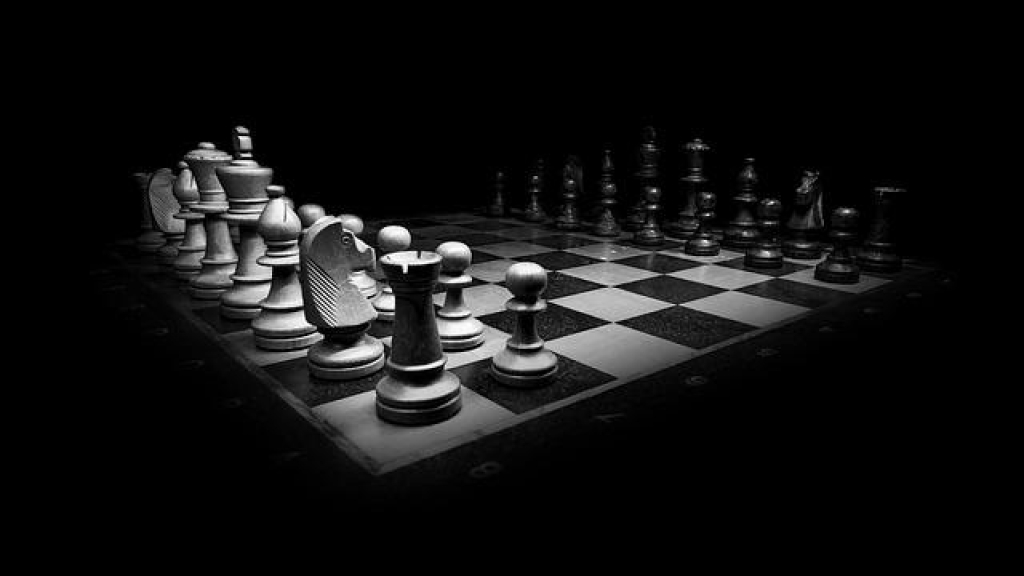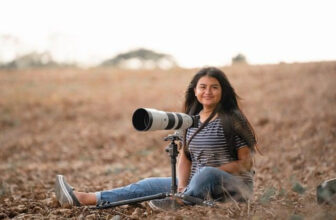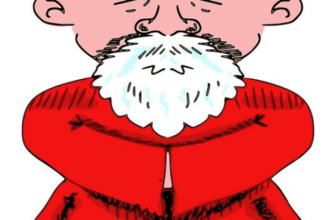Mastering Wide Angle Photography: Essential Tips
GoogleAds

Wide angle photography is a popular and captivating style that can produce stunning images with maximum impact. Whether capturing vast landscapes or immersive interior shots, mastering the use of a wide angle lens can take your photography skills to the next level. In this article, we will explore essential tips and techniques for mastering wide angle photography, allowing you to unleash your creativity and capture the world in a whole new perspective.
Understanding Wide Angle Lenses
Wide angle lenses are essential tools for photographers looking to capture expansive scenes in their entirety. These lenses have a focal length shorter than 35mm, allowing for a wider field of view. Mastering wide angle photography requires understanding the unique characteristics and challenges that come with using these lenses.
One key tip for using wide angle lenses effectively is to get close to your subject. By getting up close, you can create a sense of depth and scale in your images, making for more dynamic and engaging photos. Experiment with different angles and perspectives to find the most compelling composition.
Another important consideration when working with wide angle lenses is distortion. Wide angle lenses can cause distortion, especially at the edges of the frame. To minimize distortion, try to keep your horizon level and avoid placing important elements too close to the edges of the frame.
When shooting with a wide angle lens, be mindful of how you use leading lines to draw the viewer’s eye into the scene. Leading lines can help create a sense of movement and guide the viewer through the image. Look for natural lines in the environment or use man-made elements like roads or fences to enhance your composition.
In addition to using leading lines, incorporating foreground elements can also add depth and interest to your wide angle photos. Including a prominent foreground element can help create a sense of scale and lead the viewer into the scene. Experiment with different foreground elements to see what works best for your composition.
Choosing the Right Aperture for Wide Angle Shots
When it comes to wide-angle photography, choosing the right aperture is crucial to achieving stunning results. The aperture setting not only affects the depth of field in your photographs but also plays a significant role in the overall sharpness and quality of your images.
**Wide apertures**, such as f/2.8 or wider, are ideal for capturing **low-light scenes** or achieving a shallow depth of field. These apertures allow more light to enter the lens, enabling you to shoot in dimly lit environments without sacrificing image quality. However, using a wide aperture may result in **soft edges** or **vignetting** in your wide-angle shots, so be mindful of these potential drawbacks.
On the other hand, **narrow apertures**, like f/8 or smaller, are perfect for **landscape photography** or capturing **sharp details** in your wide-angle images. These apertures produce a **greater depth of field**, ensuring that both the foreground and background elements are in focus. Keep in mind that using a small aperture may require a longer exposure time, so using a tripod is recommended to avoid camera shake.
When selecting the right aperture for your wide-angle shots, consider the **composition** of your image and the **effect** you want to achieve. Experiment with different aperture settings to see how they impact the overall look and feel of your photographs. Remember that the aperture setting is just one piece of the puzzle in creating compelling wide-angle images – factors such as **ISO** and **shutter speed** also play a significant role in achieving the perfect shot.
| Aperture | Best For |
|---|---|
| f/2.8 or wider | Capturing low-light scenes or achieving a shallow depth of field |
| f/8 or smaller | Landscape photography or capturing sharp details |

Utilizing Leading Lines in Wide Angle Photography
When it comes to wide angle photography, utilizing leading lines can make a significant difference in the composition of your shots. These lines guide the viewer’s eyes through the image, creating a sense of depth and drawing attention to the main subject. Mastering the use of leading lines can elevate your wide angle photography to the next level.
One key tip for is to look for natural lines in the landscape or architecture. Roads, rivers, fences, and buildings can all serve as effective leading lines in your composition. Pay attention to how these lines interact with your main subject and experiment with different angles to achieve the most dynamic shot.
Another essential tip is to use leading lines to create a sense of perspective in your wide angle photography. By positioning yourself in such a way that the lines converge towards a vanishing point, you can add a sense of depth and scale to your images. This technique can be particularly effective when shooting landscapes or urban scenes.
Don’t be afraid to get close to the leading lines in your composition. By positioning yourself near the lines, you can create a sense of intimacy and immersion in the scene. This can add a unique perspective to your wide angle photography and draw the viewer into the image.
Overall, mastering the use of leading lines in wide angle photography requires practice and experimentation. By paying attention to the lines in your environment, using them to create depth and perspective, and getting up close for an intimate perspective, you can take your wide angle photography to the next level.

Managing Distortion in Wide Angle Images
Wide angle photography can produce stunning images that capture expansive landscapes or create a sense of depth and drama. However, one common challenge that photographers face when using wide angle lenses is distortion. Distortion can cause straight lines to appear curved or skewed, detracting from the overall impact of the image. Here are some essential tips for .
1. Use a quality wide angle lens: Investing in a high-quality wide angle lens can help minimize distortion in your photos. Cheaper lenses may have more optical distortions, so it’s worth spending a bit more to get a lens that produces sharper, more accurate images.
2. Pay attention to your perspective: Be mindful of the angle at which you shoot your wide angle images. Tilting your camera up or down can exaggerate distortion, while shooting straight ahead can help minimize it. Try to keep your camera level and parallel to your subject for the most accurate results.
3. Correct distortion in post-processing: Many editing software programs, such as Adobe Lightroom or Photoshop, have tools that allow you to correct distortion in your images. These tools can help straighten lines and adjust perspective to make your wide angle photos look more natural.
| Tip | Description |
|---|---|
| 4. | Use a smaller aperture: |
| Wide angle lenses tend to exhibit more distortion when used at wider apertures. By using a smaller aperture, such as f/8 or higher, you can help reduce distortion in your images. |
5. Experiment with different compositions: Sometimes, the best way to manage distortion in wide angle photography is to simply experiment with different compositions. Try shooting from different angles, adjusting your height, or moving closer or further away from your subject to see how it affects the distortion in your images.
Capturing Depth and Dimension with Wide Angle Shots
When it comes to wide angle photography, mastering the art of capturing depth and dimension is key to creating stunning images. Wide angle shots allow you to capture more of the scene in a single frame, making them ideal for landscapes, architecture, and interior photography. By following a few essential tips, you can take your wide angle photography to the next level and create images that truly pop.
One of the keys to is to pay attention to your composition. Look for leading lines that draw the viewer’s eye into the scene, creating a sense of depth. Placing a prominent foreground element in your composition can also help to create a feeling of depth and make your images more dynamic.
Another important tip for capturing depth with wide angle shots is to pay attention to your aperture settings. A smaller aperture (higher f-stop) will result in a greater depth of field, ensuring that both the foreground and background of your image are in focus. This is particularly important when shooting landscapes or architecture where you want everything in the scene to be sharp.
When shooting wide angle photos, it’s also important to consider the perspective distortion that can occur. Objects close to the camera will appear larger, while those farther away will appear smaller. This can be used creatively to exaggerate depth and create a sense of scale in your images. Experiment with different angles and perspectives to find the most visually interesting composition.
Finally, post-processing can also play a key role in enhancing the depth and dimension of your wide angle shots. Use editing tools to bring out details in the shadows and highlights, and add contrast to make your images pop. Don’t be afraid to experiment with different editing techniques to find the look that best suits your style and the mood of your images.

Making the Most of Foreground Elements in Wide Angle Photography
One of the key elements to master in wide-angle photography is the use of foreground elements. These elements play a crucial role in adding depth and interest to your photos, helping to draw the viewer into the scene. By incorporating foreground elements effectively, you can create visually stunning images that truly stand out.
When shooting with a wide-angle lens, it’s important to pay close attention to the placement of foreground elements. Look for objects or elements that can serve as anchor points in your composition, leading the viewer’s eye into the frame. This could be anything from rocks and plants to fences or people.
Here are some essential tips for making the most of foreground elements in wide-angle photography:
- Experiment with different perspectives to find the best placement for your foreground elements. Sometimes getting down low or shooting from a higher vantage point can make a big difference in how the elements interact with the rest of the scene.
- Use leading lines in your composition to guide the viewer’s eye towards the main subject. Foreground elements can be great for creating leading lines that draw attention to the key focal point of the image.
- Consider the scale and size of your foreground elements in relation to the background. Play around with different sizes and distances to create a sense of depth and dimension in your photos.
Table: Creative Examples of Foreground Elements in Wide Angle Photography
| Foreground Element | Effect in Photo |
|---|---|
| Tree Branches | Frames the main subject and adds texture to the image. |
| Wildflowers | Brings vibrant colors and contrasts to the foreground. |
By mastering the art of using foreground elements in wide-angle photography, you can take your images to the next level and create dynamic, visually captivating photos that truly tell a story.
Mastering Composition Techniques for Wide Angle Images
Wide angle photography opens up a whole new world of creative possibilities for photographers. By , you can capture stunning shots that truly stand out. In this guide, we’ll cover some essential tips to help you take your wide angle photography to the next level.
One important tip to keep in mind when shooting with a wide angle lens is to pay attention to your foreground elements. Including strong foreground elements can add depth and interest to your photos, leading the viewer’s eye into the scene. Look for interesting textures, patterns, or objects that can serve as a focal point in the foreground.
Another key aspect to consider when composing wide angle images is the rule of thirds. By dividing your frame into thirds both horizontally and vertically, you can create a more dynamic and visually appealing composition. Placing key elements along these imaginary lines can help to balance your image and create a sense of movement.
Leading lines are another powerful compositional tool to use when shooting wide angle images. By incorporating leading lines into your frame, such as roads, rivers, or pathways, you can guide the viewer’s eye through the scene and create a sense of depth. These lines can add structure and visual interest to your photos.
Lastly, don’t be afraid to experiment with perspective when shooting wide angle images. Get low to the ground or find a high vantage point to change the viewpoint and create unique perspectives. By playing with different angles and viewpoints, you can add a creative touch to your wide angle photography and capture truly memorable shots.
Q&A
Q: What is wide angle photography and why is it important for photographers to master?
A: Wide angle photography involves capturing images with a wider field of view than what the human eye can see. It is important for photographers to master because it allows them to capture more of the scene in a single shot, adding depth and dimension to their photos.
Q: What are some essential tips for mastering wide angle photography?
A: Some essential tips for mastering wide angle photography include understanding the perspective distortion that comes with shooting wide angle, using leading lines and foreground elements to create depth in the image, and experimenting with different angles and compositions to make the most of the wide field of view.
Q: How can photographers avoid distortion when shooting wide angle?
A: To avoid distortion when shooting wide angle, photographers can try to keep their subjects towards the center of the frame, use a longer focal length if possible, and be mindful of their positioning and perspective when composing the shot.
Q: What are some common mistakes photographers make when shooting wide angle?
A: Some common mistakes photographers make when shooting wide angle include overcorrecting for distortion, neglecting to include a strong foreground element in the composition, and not paying attention to the edges of the frame for unwanted elements or distractions.
Q: How can photographers practice and improve their wide angle photography skills?
A: Photographers can practice and improve their wide angle photography skills by experimenting with different compositions and perspectives, studying the work of other photographers known for their wide angle shots, and seeking feedback from peers or mentors to help them refine their technique.
Final Thoughts
In conclusion, mastering wide angle photography is a valuable skill that can greatly enhance your creative vision and storytelling in photography. By following the essential tips outlined in this article, you can effectively capture the beauty and scale of wide angle scenes. Remember to practice, experiment, and most importantly, have fun with your wide angle photography! With dedication and perseverance, you can take your wide angle photography to the next level and create stunning images that will truly stand out. Thank you for reading, and happy shooting!
GoogleAds







